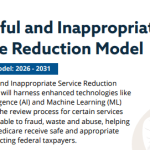Trump Administration Proposes Expanded Transparency in Coverage Requirements for Health Plans
Last week, we released an Industry Watch Alert analyzing Governor Ron DeSantis’ proposal for a Florida Artificial Intelligence Bill of Rights. That alert highlighted several operational implications for payers and utilization management organizations, including the growing importance of human oversight in claims workflows, oversight of AI enabled vendors, and heightened risk in behavioral health applications.
Only a few days later (on December 11, 2025), President Donald J. Trump issued a federal executive order titled Ensuring a National Policy Framework for Artificial Intelligence. The order promotes a single national standard for AI governance and directs federal agencies to challenge state laws that conflict with that standard. It also announces the creation of a Department of Justice AI Litigation Task Force.
The executive order has generated significant discussion and speculation. This alert focuses strictly on information from official sources, and any additional context from news reporting is clearly identified as such.





